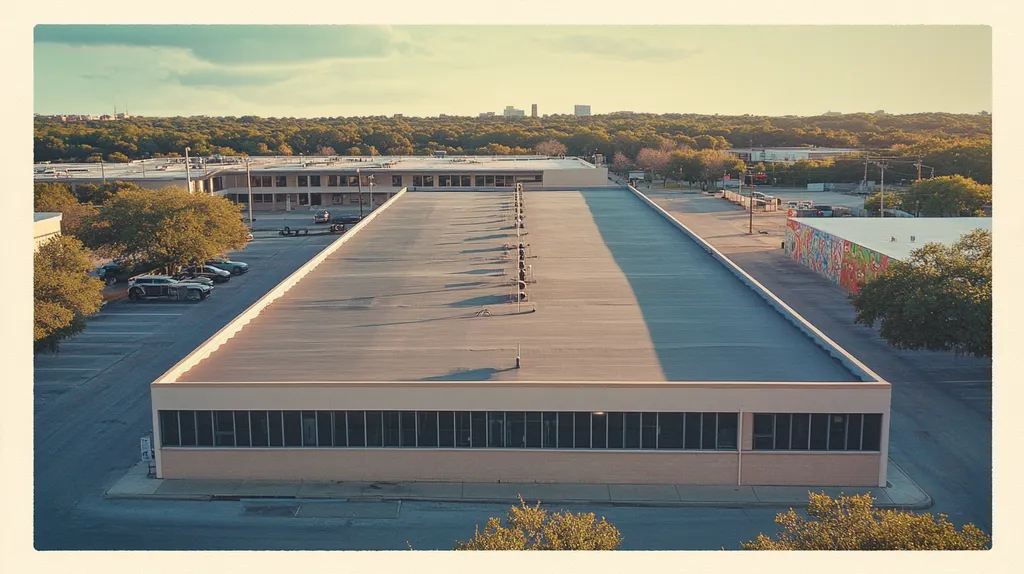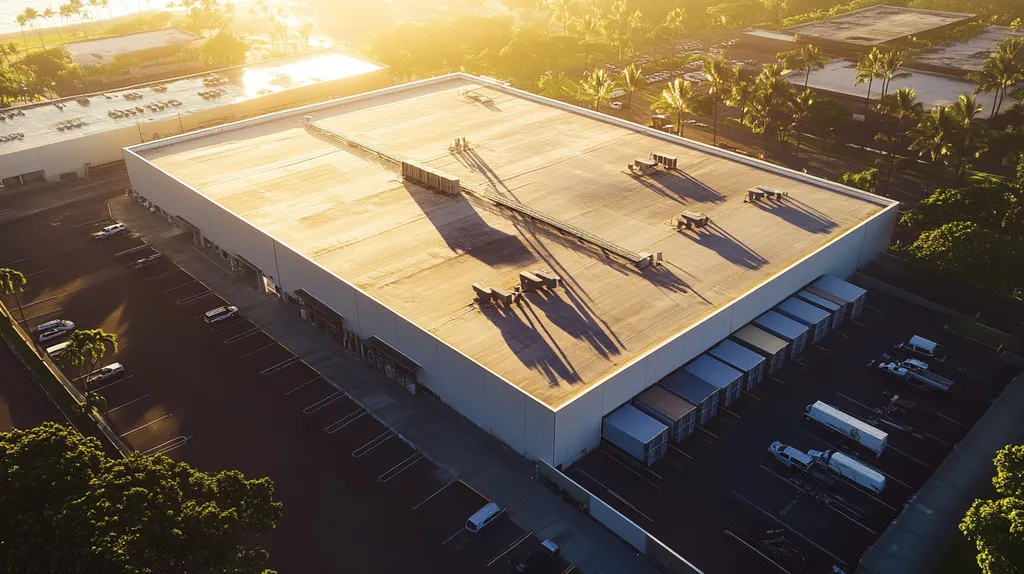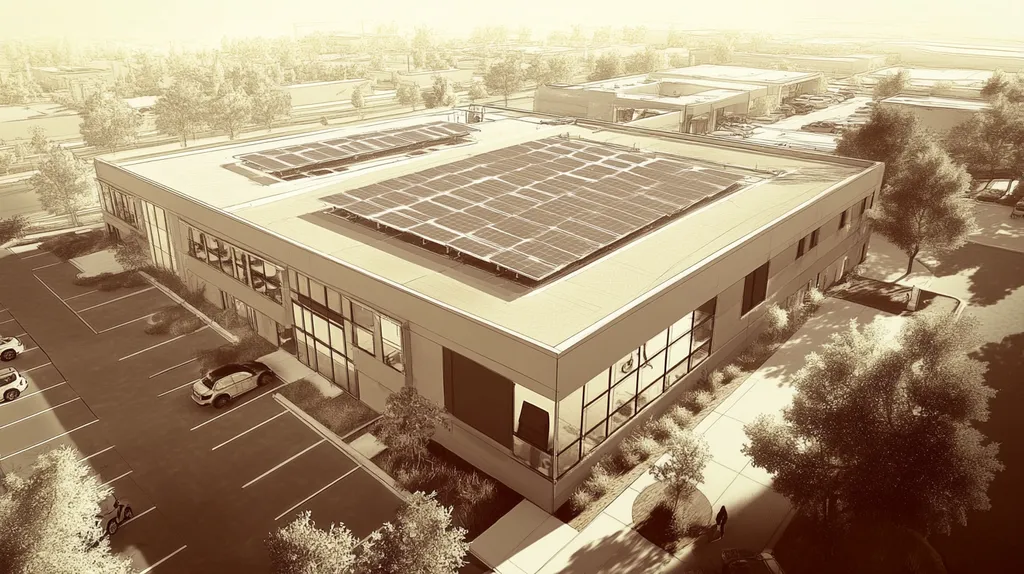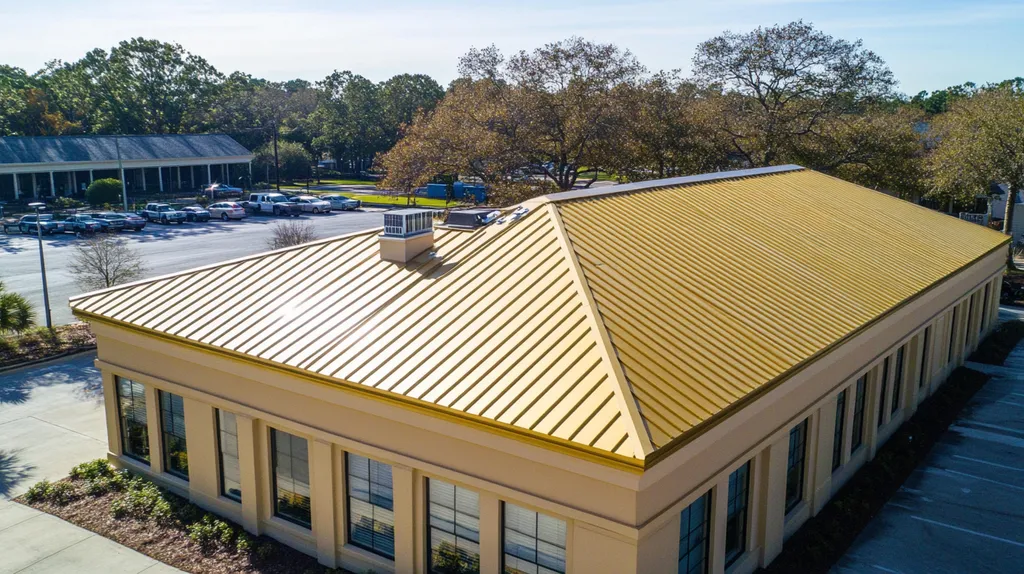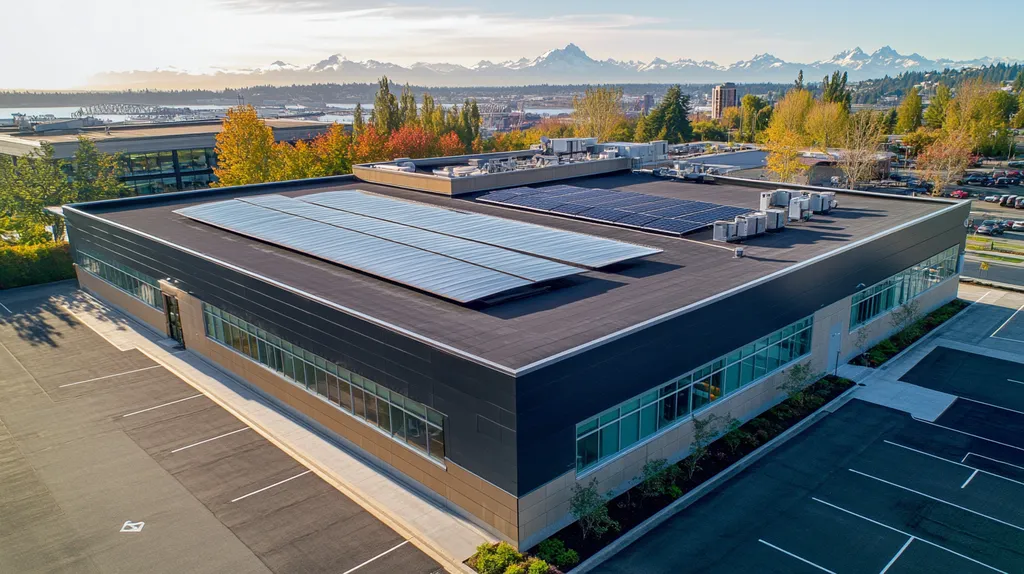Nearly 40% of commercial roofing projects face costly delays and fines due to local code violations, according to the National Roofing Contractors Association. For facility managers, understanding and navigating these regulations is critical for protecting both assets and operations.
From structural requirements to energy efficiency standards, local codes create a complex web of compliance challenges that directly impact project timelines, budgets, and safety outcomes.
This comprehensive guide examines the key performance factors, financial considerations, and operational procedures necessary for successful code-compliant roofing installations.
SECTION 1: PERFORMANCE FACTORS
The performance of a commercial roof is vital for protecting assets and maintaining smooth operations. As weather events become more severe, with the National Oceanic and Atmospheric Administration reporting over $1 trillion in weather-related damages in the last decade, facility managers must grasp the local codes governing roofing installations. Understanding these codes is essential to enhance weather resistance, ensure structural integrity, and improve energy efficiency.
Weather Resistance
Weather resistance serves as a cornerstone for effective roofing. Local codes impose standards tailored to specific regional weather conditions, such as wind speeds, snow loads, and heavy rainfall. For instance, roofs situated in hurricane-prone areas must utilize particular materials and installation methods to endure fierce winds.
Neglecting these codes can trigger premature roof failures, prompting costly repairs and downtime. Choosing the right materials ensures that investments remain protected. Facility managers should consult local code resources to verify compliance with weather-related requirements.
Additionally, advanced materials like reinforced membranes can bolster weather resistance, extending a roof’s lifespan and reducing overall ownership costs. Staying informed about code updates is crucial, particularly in areas vulnerable to climate variability.
Key Action Items
Structural Integrity
Structural integrity is crucial for the performance of commercial roofs. Local codes define design loads, guaranteeing that roofs can bear their own weight along with any additional loads from equipment and precipitation. For example, roofs in regions with heavy snowfall must consider these loads in their design.
Disregarding structural code requirements can result in severe failures that jeopardize safety and property. Roof collapses may occur during significant snowfalls or with improperly constructed roofs. Compliance with local regulations is essential to mitigate these risks.
It’s equally important to understand the building’s framework when selecting roofing materials. For instance, lightweight materials may offer benefits without compromising strength. Consulting with structural engineers can lead to informed choices for optimal roofing solutions.
Key Action Items
Energy Efficiency
Energy efficiency plays a significant role in roofing performance and is heavily influenced by local codes. Many regions enforce regulations promoting the use of energy-efficient materials and construction methods. For instance, reflective roofing may be mandated in warmer climates to help lower cooling costs.
Adopting energy-saving strategies not only reduces operational expenses but also lessens environmental impact. A well-designed insulated roof meets local energy codes while contributing to broader sustainability objectives, potentially qualifying for tax incentives.
Roof systems that surpass energy standards can lead to substantial reductions in power consumption. Working with energy consultants can unveil new opportunities for efficiency while ensuring compliance. These efforts yield double benefits—cost savings and adherence to regulations.
Key Action Items
SECTION 2: FINANCIAL CONSIDERATIONS
Financial diligence is critical for facility managers navigating the complex landscape of local roofing codes. Failure to comply can lead to hefty fines, project delays, and expensive rework. Alarmingly, a national survey reveals that 30% of commercial roofing projects exceed budget due to unforeseen code compliance costs. This section will focus on crucial financial aspects, including budgeting for compliance, analyzing material costs, and evaluating the return on investment for roofing projects.
Budgeting for Code Compliance
Effective budgeting for code compliance starts with a deep understanding of the local regulations that dictate roofing standards. Facility managers should thoroughly review requirements related to fire safety, insulation, and drainage to create financial estimates that align with legal standards, thereby minimizing unexpected expenses.
Compliance issues can lead to significant project delays. For instance, additional inspections can cost organizations thousands in lost time. Allocating a portion of the budget specifically for potential compliance-related expenses is essential for accurate financial planning.
Consulting local building inspectors during the planning phase is a smart strategy. This proactive approach ensures that the budget reflects all relevant code requirements. By incorporating compliance costs into initial plans, managers can avoid the strain of unplanned expenditures down the line.
Key Action Items
Material Cost Analysis
Conducting a thorough analysis of material costs is vital, especially when local codes dictate acceptable roofing materials. Compliance with insulation and energy efficiency standards often requires investment in higher-quality options. Facility managers should research and select materials that fulfill these standards while also ensuring long-term durability and performance.
For example, while energy-efficient roofing might entail a higher initial investment, it can lead to substantial savings on energy bills over time. Buildings using compliant materials can lower heating and cooling costs by nearly 30%, making the case for balancing upfront costs with potential long-term savings.
The local market significantly influences material prices as well. Local codes may specify certain materials, leading to fluctuations in availability and costs. Establishing strong relationships with local suppliers can help facility managers secure competitive pricing on compliant materials.
Key Action Items
ROI on Roofing Investments
Calculating the return on investment (ROI) for roofing projects requires assessing both immediate and long-term benefits, particularly in light of compliance. Buildings that meet local codes not only enhance safety but can also appreciate in value.
Research indicates that compliant roofing systems can increase property values by up to 15%. This uptick often enhances marketability, making properties more appealing to potential tenants or buyers.
Moreover, investing in code-compliant roofing extends the lifespan of the roof, reducing the frequency of replacements. A well-maintained roof protects against costly damages from leaks or failures, significantly decreasing unexpected repair expenses.
Facility managers should also factor in intangible benefits like improved tenant satisfaction and decreased liability risks associated with non-compliance. These elements contribute positively to the overall financial health of a facility.
In summary, investing in code-compliant roofing is not just about meeting regulatory requirements—it is also a financially sound strategy that can lead to significant returns over time.
Key Action Items
SECTION 3: COMPLIANCE REQUIREMENTS
Understanding local codes is essential for property owners and facility managers to ensure a successful roofing project. Non-compliance can lead to significant fines, project delays, and serious safety risks. For instance, improper installation could violate fire safety regulations, jeopardizing the safety of occupants and property. This section will delve into the important compliance requirements, including local codes, material selection standards, and the permitting processes necessary for roofing projects.
Understanding Local Codes
Local building codes outline the standards for roofing materials and installation methods specific to the area. These codes vary widely due to geographic conditions, climate, and regional regulations. For instance, buildings in coastal regions may have stringent codes regarding wind resistance to safely endure hurricanes.
Awareness of these requirements is crucial for property owners. Non-compliance can result in expensive rework, unexpected costs, and operational downtime. Engaging with local authorities or experienced roofing contractors can help clarify necessary code compliance.
Additionally, local codes often include energy efficiency requirements that can impact material selection and installation practices, providing opportunities for long-term savings and environmental benefits. Complying with these standards protects the investment in roofing and enhances occupant safety.
Key Action Items
Material Selection Standards
Material selection standards are vital for ensuring compliance and directly affect the building’s durability and safety. These standards dictate permissible materials based on local building codes and environmental considerations. For example, some jurisdictions may mandate fire-resistant roofing products.
Using materials that do not comply with these standards can undermine the structural integrity of the building and lead to future legal challenges. Any material failures due to non-compliance could result in insurance complications and costly repairs.
Local codes may also promote sustainability, encouraging the use of energy-efficient and environmentally friendly roofing materials, which can qualify for municipal tax incentives. By selecting compliant materials, facility managers meet legal obligations while contributing to sustainability and enhancing roof longevity.
Key Action Items
Permitting Processes
The permitting process is a crucial step in any roofing project. Many municipalities require permits for renovations or new construction to ensure compliance with local codes and safety regulations. The permitting requirements can vary significantly depending on local legislation.
Obtaining the necessary permits typically requires submitting detailed plans and documentation. Delays in securing permits can impact project timelines, making it essential for facility managers to initiate this process early to avoid interruptions.
Failure to obtain the correct permits can lead to fines or even orders to demolish non-compliant work. Recent surveys have shown that as much as 30% of commercial roofing projects encounter delays due to permitting challenges. Understanding local regulations and efficiently managing the permitting process can save valuable time and resources.
Key Action Items
SECTION 4: RISK MANAGEMENT
Facility managers must be acutely aware of the high stakes involved in navigating local building codes for commercial roofing. Non-compliance can lead to substantial fines, safety hazards, and liability for accidents. Research from the National Roofing Contractors Association reveals that over 30% of commercial roofing failures are linked to code violations, highlighting the need for robust risk management strategies. Understanding these risks is essential for safeguarding safety, compliance, and the value of assets.
Identifying Potential Hazards
Unidentified hazards during roofing inspections can lead to significant financial repercussions. Safety risks may arise if roofing materials clash with local codes, potentially resulting in structural failures. Furthermore, inadequate drainage systems can cause water to pool, creating additional risks for leaks and mold growth.
Uneven rooftop surfaces also present slip and fall risks, increasing liability exposure for facility managers. Thorough inspections of current roof conditions and materials against local code requirements are critical for identifying these issues before they escalate.
Regular training for facility managers in hazard identification can substantially mitigate risks. Informational sessions on compliance standards foster a culture of safety and accountability, while technology like drones and thermal imaging reveals hidden issues, reinforcing the roof’s structural integrity.
Key Action Items
Inspecting for Code Violations
Failing to address code violations can lead to serious financial consequences. Regular inspections are vital to ensure ongoing compliance with evolving local regulations. Issues like roof pitch and ventilation, if neglected, can create significant compliance challenges.
Facility managers need to prioritize often-overlooked areas such as exhaust systems and insulation requirements. Regular professional roof inspections can help uncover potential violations before they develop into expensive problems.
Documenting inspection results through detailed reports not only establishes accountability but also creates a reference for future inspections. Strong communication with local code inspectors can help managers stay updated on regulatory changes and improve future compliance.
Key Action Items
Mitigating Liability Risks
Liability risks increase dramatically when compliance is overlooked in roofing projects. A roof that fails due to non-compliance can expose facility managers to lawsuits and insurance claims, particularly in areas with strict regulations.
To mitigate these risks, it is essential to establish a comprehensive risk management plan. Hiring certified professionals for inspections ensures local code adherence, reducing potential liabilities for the facility.
In addition, comprehensive insurance coverage that addresses code compliance issues can achieve further protection. Regular training sessions on risk management can enhance staff understanding of potential liabilities, fostering a culture of compliance that minimizes the chance of accidents and litigation.
Key Action Items
SECTION 5: OPERATIONAL PROCEDURES
Implementing effective operational procedures is essential for adhering to local roofing codes and ensuring compliance throughout installation. With frequent updates to local regulations, facility managers must stay informed about their impact on roofing projects. Non-compliance can lead to hefty fines, project delays, or even dangerous building conditions. Therefore, creating comprehensive project plans, investing in team training, and establishing quality control measures are vital steps in minimizing risks and enhancing efficiency.
Project Planning and Scheduling
Thorough project planning is the bedrock of successful roofing installation. A firm grasp of local codes is critical during this stage, as regulations may dictate acceptable materials and installation methods. For instance, certain areas may mandate the use of fire-resistant materials, significantly affecting both the budget and timeline.
Scheduling must account for required inspections and approvals outlined by these codes. Facility managers should allow ample time to secure necessary permits before work begins to avoid avoidable delays. Additionally, weather conditions should be considered as unfavorable weather can slow down progress and impact compliance.
Utilizing project management software can enhance communication and provide real-time updates to all team members. Setting clear milestones aligned with local code requirements ensures that everyone remains on track. Collaborating with certified roofing contractors familiar with these regulations can further streamline the planning process.
Key Action Items
Team Training and Management
Investing in team training is crucial for achieving compliance with roofing codes and maintaining high-quality workmanship. All team members must fully understand local regulations and safety standards to avoid legal infractions. Training should cover critical areas such as materials specifications, installation practices, and safety protocols.
Regular training sessions foster a culture of accountability among the roofing team. Onsite workshops led by code experts can provide hands-on experience with required materials and methods, enhancing workers’ capabilities to complete their tasks effectively.
Effective communication is essential; designating a code compliance officer ensures there is a point person responsible for liaising with local authorities and overseeing adherence to regulations. This structure helps all team members understand their roles in maintaining compliance throughout the project.
Key Action Items
Quality Control Measures
Implementing strict quality control measures is fundamental to meeting local code compliance. Regular inspections during installation help to identify potential issues before they escalate into costly problems. Developing a quality control checklist based on local codes can ensure that no critical steps are missed.
Engaging third-party inspections adds an extra layer of verification regarding compliance with the relevant regulations. Hiring local roofing inspectors familiar with area codes can affirm that installations meet required standards, thereby enhancing credibility and minimizing risks.
Maintaining thorough documentation throughout the roofing process is equally essential. Keeping detailed records of materials used, inspections performed, and training sessions conducted serves as valuable references in the event of code violations and can be crucial for future warranty claims.
Key Action Items
SECTION 5: OPERATIONAL PROCEDURES
Implementing effective operational procedures is crucial for ensuring compliance with local roofing codes during installation. Frequent updates to these regulations mean facility managers must stay informed about their implications on roofing projects. Non-compliance can result in costly fines, project delays, or dangerous building conditions. Establishing robust project planning, thorough team training, and stringent quality control measures are essential to mitigate risks and enhance efficiency.
Project Planning and Scheduling
Effective project planning is the cornerstone of successful roofing installation. A comprehensive understanding of local codes is vital at this stage, as they dictate acceptable materials and installation procedures. For example, fire-resistant materials may be mandated, influencing both the budget and schedule.
It’s equally important to schedule necessary inspections and permit approvals as outlined by local regulations. Facility managers should allow ample time to secure these permits before starting work to avoid costly delays. Planning for adverse weather conditions is also crucial, as they can significantly impact project timelines and compliance.
Utilizing project management software can enhance team communication and provide real-time updates. By setting clear milestones that align with code requirements, all team members can stay on track. Working with certified roofing contractors familiar with local regulations further streamlines the planning process.
Key Action Items
Team Training and Management
Team training is essential for achieving compliance with roofing codes and ensuring high-quality workmanship. Every team member must understand local regulations and safety standards to avoid potential infractions. Training topics should include material specifications, installation guidelines, and safety protocols.
Regular training sessions promote a culture of accountability and compliance among the roofing crew. For instance, onsite workshops led by code experts can offer hands-on experience with required materials and methods, helping workers perform their tasks more effectively.
Establishing a clear communication structure is key; appointing a compliance officer can ensure responsibilities for liaising with local authorities and monitoring adherence to codes. This strategy helps clarify roles in maintaining compliance throughout the project.
Key Action Items
Quality Control Measures
Implementing strict quality control measures is crucial for ensuring compliance with local codes. Conducting regular inspections during installation allows for the early identification of potential issues before they develop into costly problems. Creating a quality control checklist based on local codes can help ensure that essential steps are not missed.
Engaging in third-party inspections can provide an unbiased assessment of compliance with relevant regulations. Employing a local inspector familiar with area codes helps verify that installations meet necessary standards, enhancing credibility and reducing risks associated with non-compliance.
Documenting every stage of the roofing process is equally important. Keeping detailed records of materials used, inspections conducted, and training sessions completed serves as valuable evidence in the event of code violations and supports future warranty claims.
Key Action Items
The Bottom Line
With over 40% of commercial roofing projects facing code violations annually, the stakes for proper compliance have never been higher. Recent industry data shows non-compliant installations cost U.S. businesses more than $2.1 billion yearly in repairs, fines, and operational disruptions.
Understanding and following local codes represents the cornerstone of successful roofing projects. From structural requirements to energy efficiency mandates, these regulations directly impact safety, performance, and long-term value.
As codes continue evolving to address emerging challenges like extreme weather and sustainability goals, facility managers must maintain vigilant oversight of compliance requirements.
Those who implement comprehensive compliance strategies while staying current with code updates position themselves to protect assets, control costs, and ensure operational continuity for years to come.
FREQUENTLY ASKED QUESTIONS
Q. What local codes affect commercial roof weather resistance?
A. Local codes for commercial roofs are based on specific weather conditions, such as wind and snow. These codes dictate the materials and construction methods to ensure that roofs endure severe weather without premature failures. Understanding these requirements is essential for facility managers to select appropriate materials and methods for their roofs.
Q. How can I budget for compliance with industrial roof codes?
A. To budget for compliance, first review relevant local codes that impact your roofing project. Allocate funds specifically for compliance-related expenses to avoid budget overruns and unforeseen costs. Consulting with local inspectors early in the planning phase can help ensure that your financial estimates accurately reflect all required compliance measures.
Q. What are the compliance requirements for a commercial roof?
A. Compliance requirements include understanding local codes related to roofing materials, installation methods, and permits. These regulations vary significantly based on geographic location and climate issues. Engaging with local authorities can help clarify necessary compliance, ensuring both safety and adherence to regulations for your roofing project.
Q. How can I identify potential hazards on my commercial roof?
A. Conducting thorough inspections and training sessions can help identify potential hazards on commercial roofs. Look for code violations such as improper drainage and uneven surfaces which can cause safety risks. Engaging technology like drones for inspections can also help uncover hidden issues and ensure compliance with safety standards.
Q. What are effective operational procedures for roofing projects?
A. Effective operational procedures include thorough project planning, team training on codes, and implementing quality control measures. These steps help ensure compliance with local regulations and enhance overall project efficiency. Regular inspections throughout the roofing installation process are also critical for identifying issues and maintaining standards.
Q. What materials are typically required for compliance with local roofing codes?
A. Compliance often requires using materials that meet local building codes, including energy-efficient and fire-resistant options. Selecting compliant materials based on specified standards is vital to ensure durability and safety in roofing projects. Local regulations may also influence material availability and pricing, so thorough research is essential.
Q. Why is ongoing training essential for roofing compliance?
A. Ongoing training ensures that team members are up-to-date on local codes and safety standards, minimizing legal risks. By fostering a culture of accountability, training enhances the quality of workmanship and preserves compliance throughout the project. Regular workshops and sessions help keep the team informed on any changing regulations.

